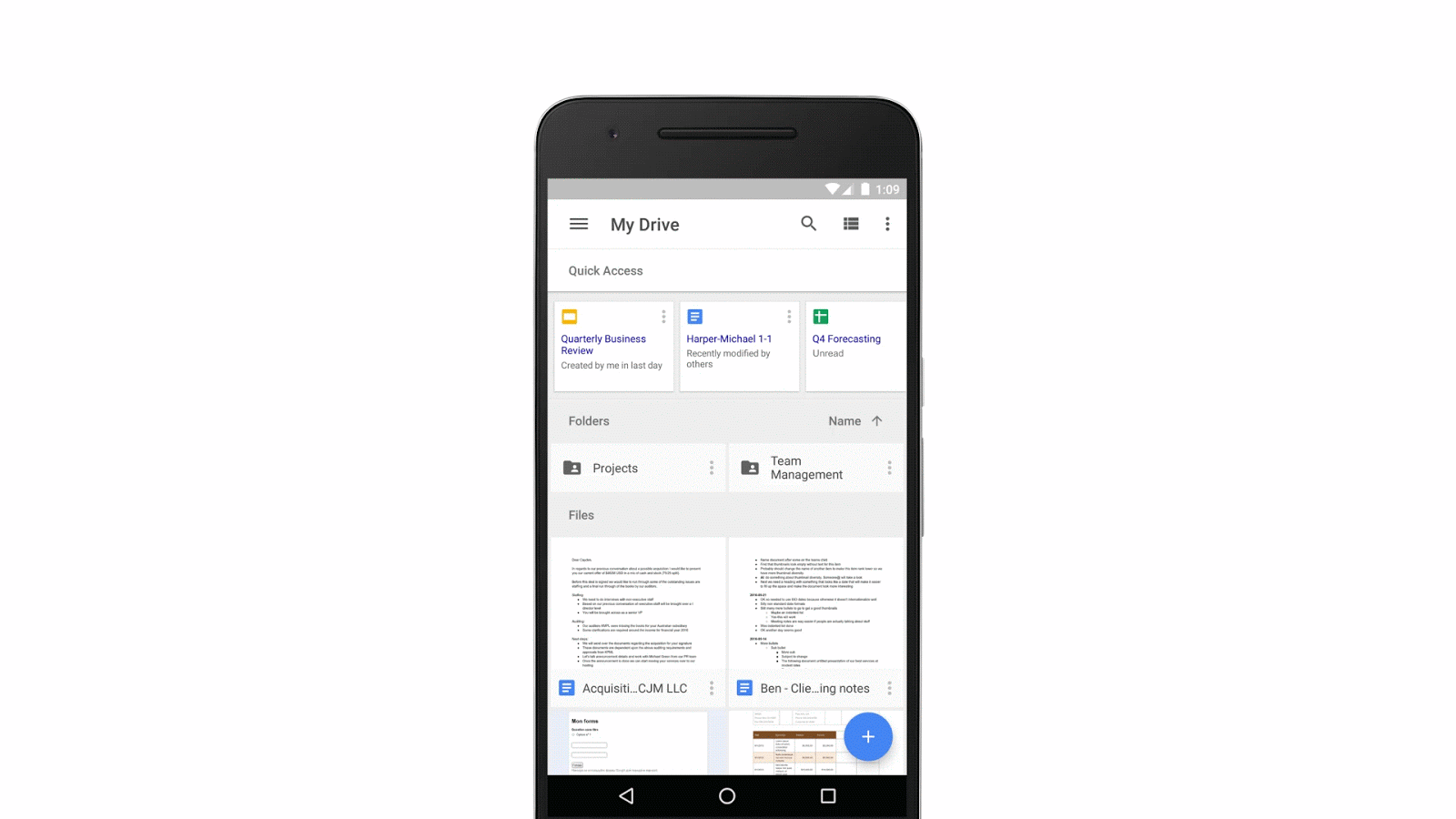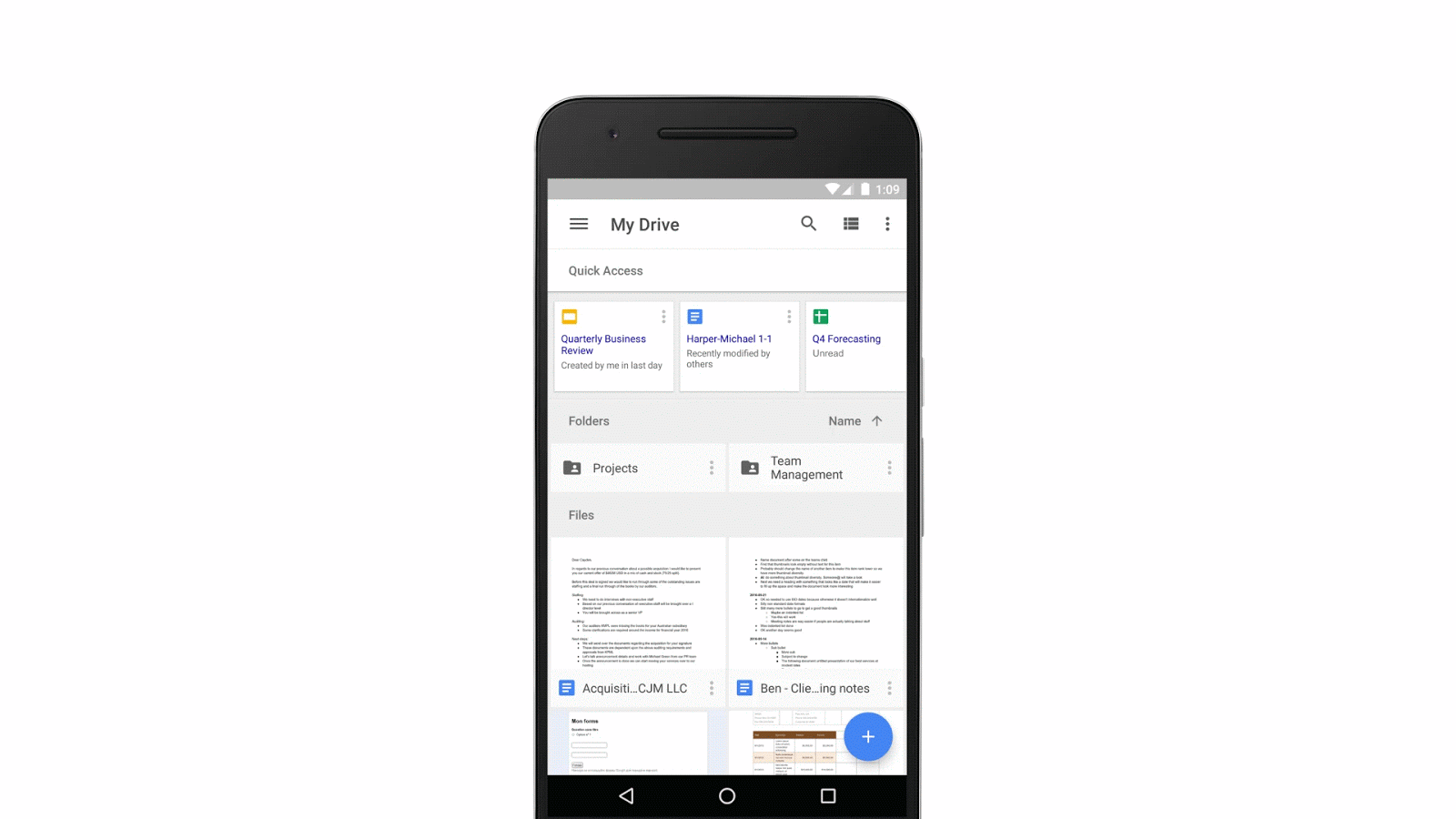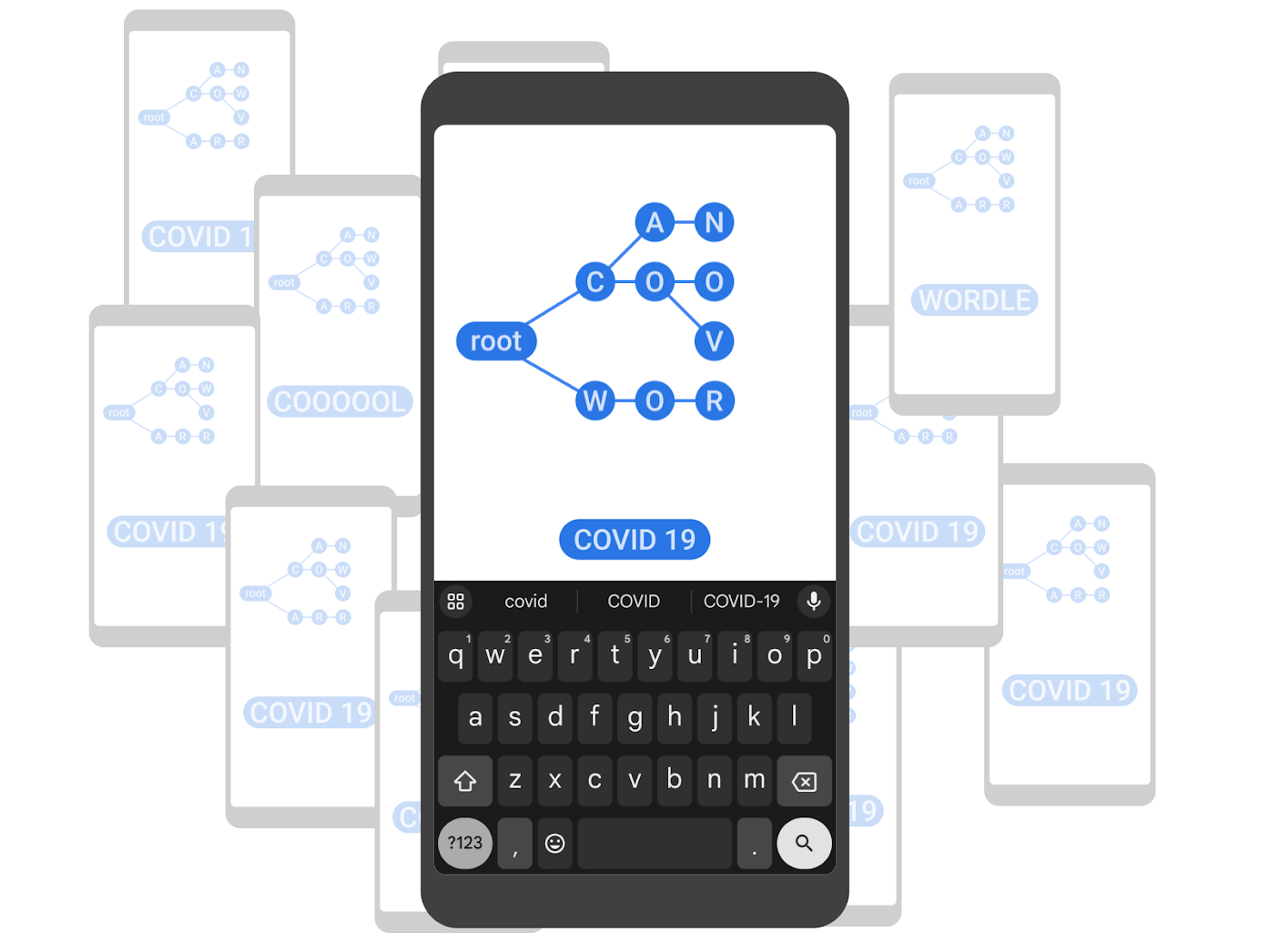
Quick Access in Drive: Using Machine Learning to Save You Time
March 10, 2017
Posted by Sandeep Tata, Software Engineer, Google Research
At Google, we research cutting-edge machine learning (ML) techniques that allow us to provide products and services aimed at helping you focus on what’s important. From providing language translations to understanding images to helping you respond to emails, it is our goal to help you save time, making life — and work — a little more convenient.
Recent studies have shown that finding information is second only to managing email as a drain on workplace productivity. To help address this, last year we launched Quick Access, a feature in Google Drive that uses ML to surface the most relevant documents as soon as you visit the Google Drive home screen. Originally available only for G Suite customers on Android, Quick Access is now available for anyone who uses Google Drive (on the Web, Android, and iOS), saving you from having to enter a search or to browse through your folders. Our metrics show that Quick Access takes you to the documents you need in half the time compared to manually navigating or searching.
Quick Access uses deep neural networks to determine patterns from various signals, such as activity in Drive, meetings on your Calendar, and more, to anticipate your needs and show the appropriate documents on the Drive home screen. Traditional ML approaches require domain experts to derive complex features from data, which are in turn used to train the model. For Quick Access, however, we constructed thousands of simple features from the various signals above (for instance, the timestamps of the last 20 edit events on a document would constitute 20 simple input features), and combined them with the power of deep neural networks to learn from the aggregated activity of our users. By using deep neural networks we were able to develop accurate predictive models with simpler features and less feature engineering effort.
 |
| Quick Access suggestions on the top row in Drive on a desktop browser. |
We hope Quick Access helps you use Drive more effectively, allowing you to save time and be more productive. To learn more, watch this talk from Google Cloud Next ‘17 that dives into more details on the ML behind Quick Access.
Acknowledgements
Thanks to Alexandrin Popescul and Marc Najork for contributions that made this application of machine learning technology possible. This work was in close collaboration with several engineers on the Drive team including Sean Abraham, Brian Calaci, Mike Colagrosso, Mike Procopio, Jesse Sterr, and Timothy Vis.
-
Labels:
- Machine Intelligence
- Product



